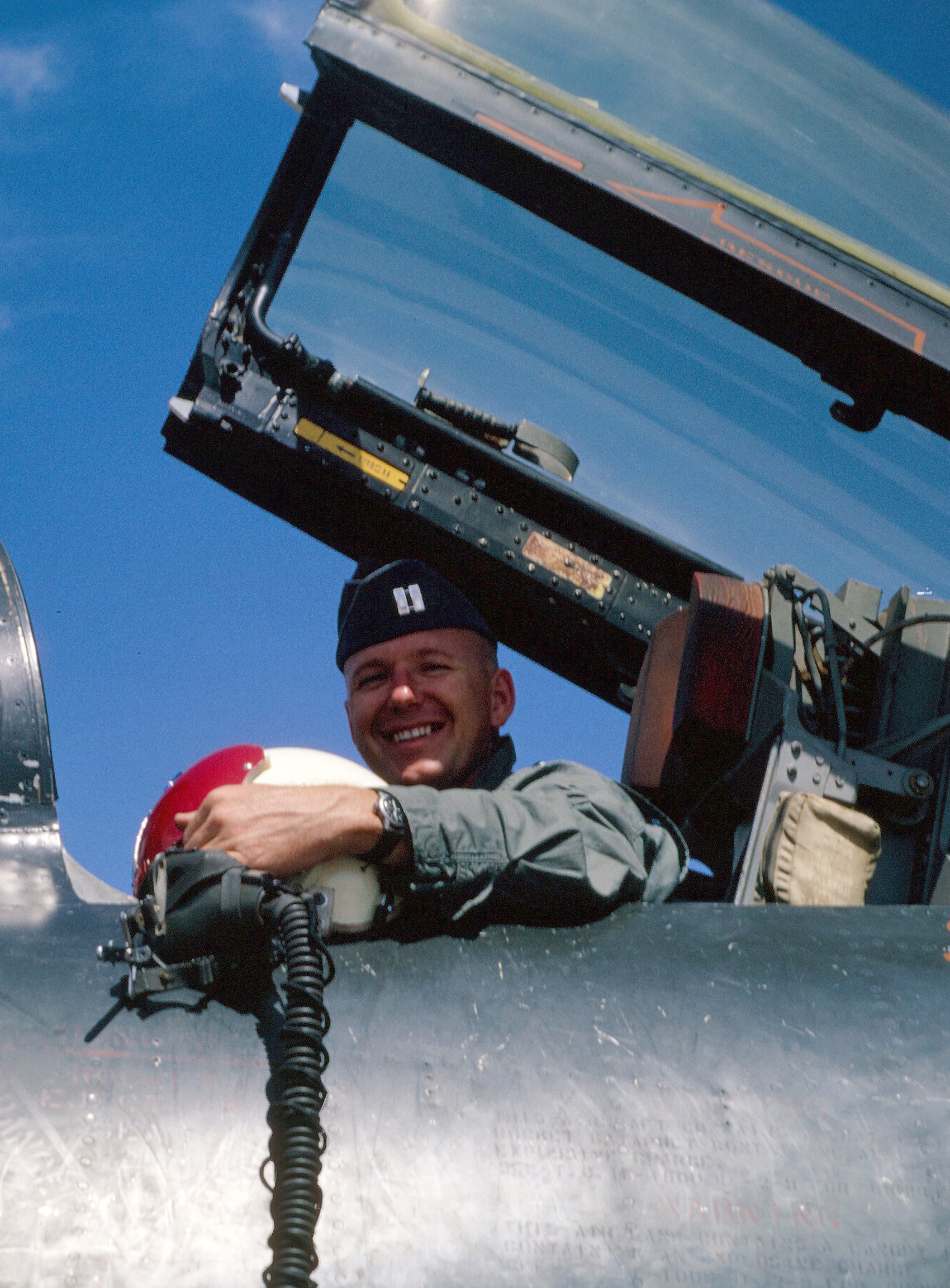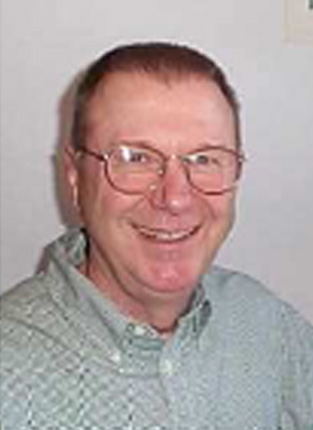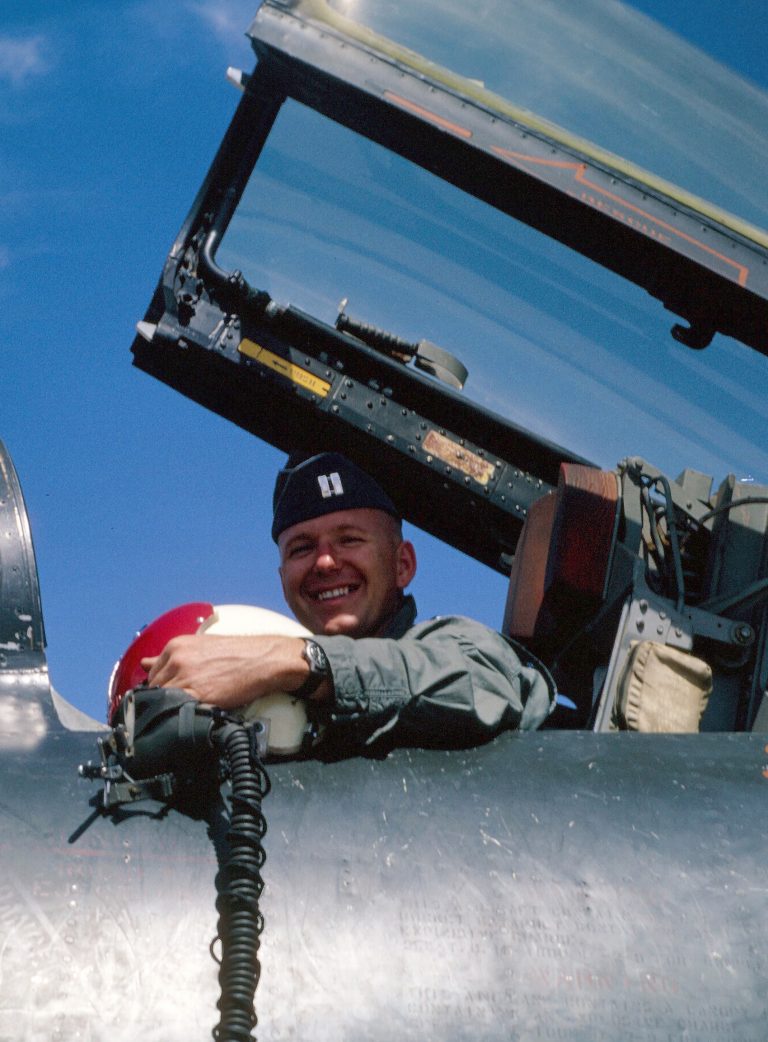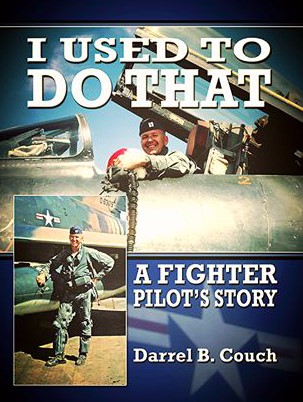In 1914, my father was born on the family farm about 10 miles (an all-day round trip wagon ride) west of Hot Springs AR. After graduating from the 8th grade, at age 14, he and his 16-year-old brother were told the farm could not support them and they had to leave home. Dad and Uncle Clifford did split up, but for the next five years, lived as hoboes and itinerant workers. Near the same time, they drifted back to the family farm.
In 1913, my mother was born in Ravena, TX, to a one-horse one-plow sharecropper near the banks of the Red River. During the dust bowl days, Papa Fogle loaded the wagon, and instead of going west to CA, he went east and settled west of Hot Springs, AR. Mom and Dad met and married. Two and a half years after my older sister was born in a log cabin, I was born in a frame farmhouse located where the Hot Springs airport now sits. For the next 9 years, we lived in 5 other locations but finally settled in Hot Springs. I went to Hot Springs schools, and due to lack of motivation, family not caring, and being a closet juvie, I did poorly. I, however, was a prolific reader. For the next 7 years, I averaged 1.5 books a week, including in class.
In 1955, to be closer to Dad’s family and better work, we moved to Anaheim, CA. We lived in an orange grove tract house about a mile of country road from a new amusement park being built. It was called Disneyland. Dad’s brother and father currently worked there. Early in life, I had started an interest in flying but did not consider what education I needed to achieve my goal. At 17 years old and graduating just 7.5% from the bottom of a class of 450 students, I joined the USAF. At the same time, I chose to get motivated and put my years of prolific reading to use. In basic training, at Parks AB, CA, I tested very well and had my choice of technical schools. I went to Lowery AFB, CO, and attended Bomb Navigation Technician School. I graduated #1.
My first assignment was on the new B-52D at Castle AFB, CA. After about a year at Castle, I was cross-trained into Electronic Countermeasures and was sent to Mountain Home AFB, ID. After about 18 months at Mt. Home, I heard a radio advertisement that the USAF was accepting high school graduates into Aviation Cadets. I started the very hard and long ordeal of an enlisted man getting into Aviation Cadets. I did get into Class 60-H, just two classes from the end of the Aviation Cadet program. I worked very hard and flew well. I competed against Military Academy, ROTC, OCS officers, and college graduate Aviation Cadets. I graduated #1 in flying and #2 in academics. I had my choice of aircraft. All along I had wanted to be an F-100 pilot, but at that time, all F-100 graduates, except the class “Top Gun” went on to be B-47 copilots. Not risking not being “Top Gun”, I went to be a pilot training instructor. For five years, I instructed undergraduate pilot training in the T-33, T-37, and T-38.
In 1962, I met and married a Massachusetts girl, Evelyn (Evie) Badger. I graduated at least 47 students and never had a single student wash out. Five years later, I got my F-100 assignment to the 613 TFS at England AFB, LA. First, it was a short 3 month school at Luke AFB, AZ. All of the short school students were high time pilots, mostly UPT instructors. We were the last students to fly the F-100C. The 613 TFS was being sent TAC rote to Aviano. Evie flew ahead and got us a house. I graduated and drove to LA and prepared to fly out 3-4 days later. With the 613th, I flew my first F-100D. After a four-month tour of sitting nuke alert at Aviano, we returned to England AFB. The 613TFS was being reassigned to Torrejon Spain. Since I had not been to Vietnam, I was reassigned to the 614th TFS, a depleted and rebuilding squadron.
All of a sudden, with only 7 months in the F-100, I became one of the squadron’s more experienced F-100 pilots. The USAF was developing a new ground-controlled radar bombing system, “combat sky spot”. It was to be used as all-weather bombing guidance for fighters built only for visual bombing. I flew at least 50% of the system development flights. Early in 1966, to fly the F8 Crusader, I got a Navy exchange assignment. USAF said, “No VN tour for me with the Navy, Assignment canceled.”
In September of 1966, I deployed to VN with the 614TFS. There, I flew 200 F-100 combat missions. I was shot down on #106. I was then transferred to be a Forward Air Controller flying the 0-1 Birddog. In 4 months, I flew another 220 0-1 missions and 6 more in other airplanes. In early 1967, Chuck Yeager had come to VN looking for F-100 pilots to go from VN to Clark PI to fly the F-4D. I got one of the slots. After VN, I went to F-4C RTU at Davis Monthan and back to Clark to fly our new F-4D’s. At Clark, I was assigned as a staff officer. I was the General War operations and plans officer. Chuck guaranteed, if I took the job, I would get the required flying time and remain combat-ready. I did a normal nuke alert tour rotation. An Australian exchange duty to fly the Mirage 3C came down and I got it. I made Major and the Aussies canceled this one.
After Clark, with the USAF policy being no second tour to VN until everyone had been, I got a B-52 assignment. AAAARRRRGGGGH!!!! Many late-night attempted calls later, I did get it changed to the B-58. The day after I arrived at Little Rock AFB, the B-58 program was canceled. Due to concealed ejection injuries, I had to turn down an offered SR-71 slot. I eventually wound up in the FB-111A at Pease AFB, NH. While waiting for the first FB-111 class, I became the Chief of non-Tac Stan Eval and a T-33 IP. My job was to get old B-52 and B-58 pilots ready to be the only pilot in a tactical fighter-type aircraft. After FB-111 school, we did the FB-111 category 2 flight test program. I became the Wing Flying Safety Officer and then the Wing Director of Safety. During this time, I also remained combat-ready and sat my nuke alert tours.
Approaching five years at Pease, I was notified I was #1 on the list to be given a Korea remote assignment. The Safety Director job at Yokota, Japan, an accompanied tour, became available. Evie and I agreed to take the job. Thus started the worst year in our lives. After one year, VN over, the USAF was cutting back on field grade officers. An early departure retirement was offered. I met the criteria and we took a tour ending retirement.
On my 38th birthday, In August 1976, I retired. Due to residuals from my combat ejection injuries, within two years, I became too unsafe for even me to fly. I grounded myself. I went to work in industrial and flying safety. By examination, I achieved a Certified Safety Professional designation, # 9140 in the world. We raised two sons. Our sons are the first two members of either of our families to have a college degree. At age 69, I finally had to fully retire. Due to combat ejection injuries and Agent Orange, I am now 310% raw score VA disabled. My current ministry is finding not aware veterans with military caused injuries, illnesses, and disease–and helping them get VA disability. I’ve helped hundreds. Do you know anyone needing help?
Of the airplanes I have flown, the F-100 stands head and shoulders above all the others. Even though it could be a beast, with a strong, gentle, and sure hand, it was a pleasure and a thrill to fly.
Darrel “Eagle Eye” Couch, (Major USAF, Ret.) “Headed West” December 4, 2018
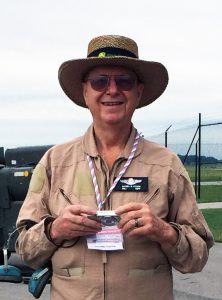 Darrel Couch’s son Keith sent the following note:
Darrel Couch’s son Keith sent the following note:
“It is with a heavy heart that I convey that Darrel B. Couch, loving husband, father, pilot, and author passed from this world on December 04, 2018. He was on his farm in Bonnerdale, AR trimming brush to help improve his deer herd. He was late getting back to the cabin, so my brother Todd went to find him. Dad was on the ground lying beside his truck. He died of a very sudden heart attack; he passed fast, doing what he loved, and where he wanted to be – on his farm.
Dad is survived by his wife Evelyn (Evie), and sons Todd and Keith. Dad is survived by his wife Evelyn (Evie), and sons Todd and Keith” – Keith Couch
Darrel was an active member of the SSS, he will be missed by all who knew him.
I USED TO DO THAT – A FIGHTER PILOT’S STORY by Darrel B. Couch
(Pages 181-184 from my book)
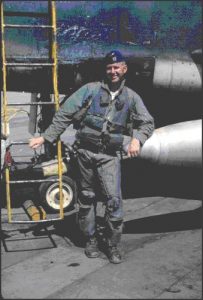 My Combat Ejection or Nylon Let Down
My Combat Ejection or Nylon Let Down
(First written April 2005 for an NMUSAF research project)
Purple Heart (PH): 614 Tactical Fighter Squadron; F-100D; No tail number; Phan Rang AB, Vietnam.
On 19 February 1967, while returning from my 106th mission. I was shot down in the traffic pattern at Phan Rang. Everything outside the perimeter of the base was VC/NVA controlled. We were shot at constantly. We could not see ground fire during the day, but by the muzzle flashes on the ground, you could follow the ground track of night-flying aircraft south of Phan Rang.
I most likely took one of those critical spot hits we called “Golden BBs”.
I was flying at 2,000’ AGL and at GCA traffic pattern speed, which was also near the F-100D best glide speed. At best glide speed at 4,500 FPM rate of descent, the ground impact was only about 22 seconds to go.
I was flight lead but had moved to #2 so my #2 could get a GCA approach he needed to maintain instrument currency. I heard and felt a muffled thump and felt vibrations as the engine made its last gasp. Immediately, I saw the engine instruments rapidly decrease to “O”. The aircraft engine flew west and the only other thing I heard was; “The Sounds of Silence”. Even so, I attempted an unsuccessful air start and switched to guard channel to radio my intentions.
The flight manual says, “During an engine air start, it can take up to 45 seconds to get engine power sufficient to maintain level flight”. My ejection decision was a “no-brainer”. I had only dropped 3-400’ behind and below the lead by the time I ejected. The entire “one & zero” ejection sequence only takes 1 second, but again, I was in adrenalin induced slow motion. As it happened, I could feel every phase of the ejection sequence. After I ejected, with my “one & zero” lanyard attached to the parachute, I had a seat entanglement with the parachute.
I took the opening shock across the back of my neck and left shoulder. I looked up to make sure nothing was tangled, and the parachute had two panels torn from top to bottom. The only thing holding the chute together was the skirt and blowhole hems.
The next thing I saw was a Hun in a left turn. My first thought was the engine had started and I was in a lot of trouble. Then the Hun started going lower and I thought it was going to crash in the ocean. Not so, it was my #2 circling me. After a full 360, I saw the crash smoke. I got out my survival radio and contacted the flight and Phan Rang tower to confirm rescue was being scrambled. They were!!!
Of course, with my distractions, I forgot to deploy my survival kit, a mistake I never realized until I tried to run after landing. With the standard fighter 24’ chute with 2 panels missing I was coming down fast. Phan Rang was in the coastal turn area of SVN. The area was like Arizona. It had dust storms and cactus fences and very little vegetation. I could see I was going to land in a bare dirt field about 100 yards from a tree line.
We were always told to lie down in the grass and never go to the tree lines. That was where Charlie (AKA: Viet Cong) hung out. After landing, I released my canopy and saw I was like a target on a shooting range. I disregarded conventional wisdom and ran for the tree line. After I took cover, I could hear people whistling to either side of me. I called my flight members to get a strafing pass either side of my position, but the rescue chopper, (well trained in firefighting and rescue, but not experienced in combat rescue) our base firefighting H-43 chopper, was approaching and screamed to pull off, he might get shot down by the fighters. In fact, he should have pulled out and let the fighters give him fire cover.
By then, the flight members were out of fuel and had to land. It was too late to scramble an alert flight and there were no inbound mission returns within a suitable time range. The chopper then came in and landed 50 yards beyond my parachute and the firefighter got out to provide me any needed assistance.
Now it was decision time!! I had a chopper on the ground, an exposed firefighter, and 150 yards to run. I jumped and ran. For the entire trip, I could feel a bullet hitting me between the shoulder blades. I made it!! When I got in the chopper, the crew and Vice Wing Commander, Col. Edward P. (Ed) McNeff, were laughing their heads off.
I really could not see the humor until I tried to climb in and got hung up. I had my 38 S&W Combat Masterpiece revolver tied to my pistol belt with a piece of nylon parachute cord. The revolver had come out of the holster and I was dragging it behind me on a 6’ cord. Of course, I was in shock and my mouth was so dry I could barely croak.
After I got to the Wing Commanders’ office, the base safety officer wanted to go look at the crash site. The Army liaison, 101st Airborne Major, wanted to secure the area with a platoon, but it was approaching sundown and safety was in a hurry. They took 5-6 people to the site in the same chopper.
At about 50’ AGL, Charlie opened up on the chopper. It took several hits. One went through the chopper skid, the floor, bounced off the engine support bulkhead and hit the safety officer, Ralph Beekman, right between the eyes, and dropped harmlessly on the floor between his legs. That is a really scary way to get a souvenir. (No injury no PH) Back at the Commander’s office, he was so pale-faced; you could not see his lip line. Some months later, an army sweep was done in the area. They found the 20MM cannons and gun sight from my aircraft in a cave.
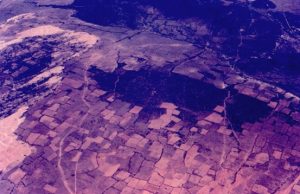 I landed in the lower center of this photo. My F-100D landed near the sand dunes to the left. Photo DBC. Go to Google Earth today and the area looks almost the same. Due to the seat entanglement with my parachute, muscles under my left scapula were torn and my shoulder sags ½ – ¾ inch. I had five vertebra compression fractures (2 cervical, 2 thoracic, & 1 lumbar). Purple Heart awarded. The flight surgeon released me to fly as soon as I wished. I flew three days later.
I landed in the lower center of this photo. My F-100D landed near the sand dunes to the left. Photo DBC. Go to Google Earth today and the area looks almost the same. Due to the seat entanglement with my parachute, muscles under my left scapula were torn and my shoulder sags ½ – ¾ inch. I had five vertebra compression fractures (2 cervical, 2 thoracic, & 1 lumbar). Purple Heart awarded. The flight surgeon released me to fly as soon as I wished. I flew three days later.
Epilogue: I never told the flight surgeons, for the remaining 9.5 years of my career, that I could not turn my head if I was pulling more than 2 G’s. I would turn my head the way I wanted to go before putting on the “G” load. I also had back, shoulder, and neck pain and muscle twitching in my left hand and arm. I flew this way for the rest of my career which included 320 more combat missions (94 F-100, 220 O-1, and 1 A-1H), 5 more airplanes, and about 2,000 hours.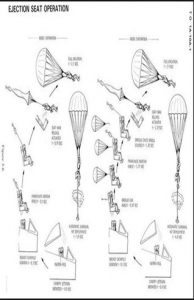
Shortly after the ejection, the flight surgeon did tell me they could operate on the shoulder, but there was a 50/50 chance of making it worse or better. It was best to leave it alone. I did not know until I had 2 strokes in 2004 that I also had blood flow restrictions in my vertebral arteries and reduced blood flow to the back of my brain. Turning my head fully in any direction cut my rear brain blood flow completely off
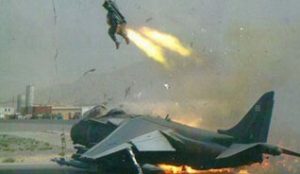 This photo is not mine it’s from the internet and is an example of riding a rocket-boosted ejection seat.
This photo is not mine it’s from the internet and is an example of riding a rocket-boosted ejection seat.
After my retirement in 1976, from about 1985 until October 2004, I had frequent vertigo (spatial disorientation) and dizzy spells. The idiots at the VA, without medical test one, diagnosed this as hyperventilation and prescribed Dramamine. I told them I was a pilot and knew about hyperventilation and this was not it. It took a world-renowned neurologist from the University of Arkansas for Medical Sciences (UAMS) 3 years to convince the uneducated VA feather merchant claims adjusters otherwise.
Unknown then, but now confirmed, my injuries and blood flow problems to my brain also caused some anger issues that got me volunteered as a FAC to go fly the 0-1 Birddog. Two specific issues were getting mad at a crew chief who left his 11.5-inch screwdriver jammed in my ejection seat handle and refusing to fly a night weather sky spot mission in a bird with an inoperative standby inverter. If I had a flameout there would be no instrument lights or battery-powered engine ignition. These stories are written.
In the 0-1, I had to look down a lot and I could not hold my head up. I flew 220 missions mostly left-handed with my right elbow on the right door map case and my chin resting in my hand. In 1969, I turned down a request by SAC rated Personnel, to go fly the SR-71. At Little Rock AFB, I had learned the SR-71 physical requirements and I knew I could not pass the required astronaut physical. After retiring, I was having so many problems like vertigo dizzy spells, and almost constant headaches I turned down offered jobs with Federal Express, Falcon Jet Instructor for the Coast Guard, and Aircraft Commander (AC) jobs for 3 other cargo airlines.
Forty-one years after the ejection, including 32 years of frustration with the VA, as a result of residuals of my injuries (and they are a very long list) and being rated unemployable, I am now rated 100% permanent and total disabled, backdated to 6/2005. After I was shot down and should have been grounded, I earned 25 additional awards and decorations. Those included the Silver Star, 3 DFC’s, and 12 Air Medals.
Epilogue-2: February 12, 2014. Major General Edward P. (Ed). McNeff, USAF Ret. reviewed my book. I learned something I never knew. His comment was, “I can still see that long-range shooter’s bullet hole appearing in the chopper bulkhead about 12” above my head.
March 23, 2013: Johan Ragay, the collector of Pedro (Call sign for all USAF rescue helicopters) information, has my rescue story. It says the chopper landed where I asked them to land, between my parachute and the trees. Combat confusion & time. Who’s?
Card: F-100D’s with 4 X 750# General Purpose Bombs. Photo: DBC
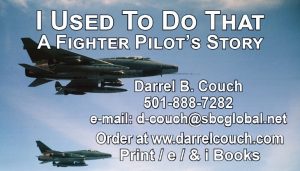
For a signed copy of my book, call or email me
-Darrel Couch

